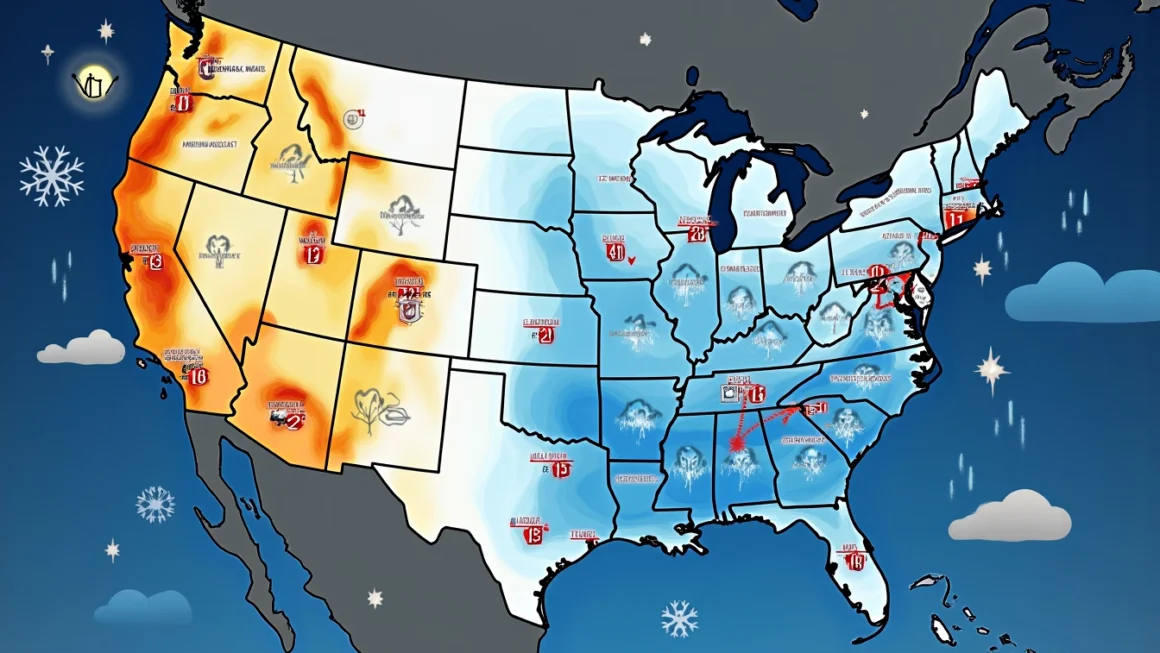Extreme Temperature Swings Across the United States
Table of Contents
As we move into the heart of winter, the United States is experiencing a rollercoaster of temperature fluctuations that are keeping residents on their toes. From bone-chilling cold to unseasonably warm conditions, different regions are facing diverse weather patterns that are sure to impact daily life and activities.
The Midwest: Bracing for Arctic Blast
The Midwest is preparing for a significant drop in temperatures as an Arctic air mass descends upon the region. Cities like Chicago, Minneapolis, and Detroit are expected to see temperatures plummet well below freezing, with some areas potentially experiencing subzero readings. This cold snap is likely to bring challenging conditions, including:
- Hazardous wind chills that could reach -20°F or lower
- Increased risk of frostbite and hypothermia
- Potential for snow squalls and reduced visibility
- Stress on heating systems and higher energy consumption
Residents are advised to take necessary precautions, such as limiting time outdoors, ensuring proper winter attire, and checking on vulnerable neighbors.
The Southeast: A Taste of Spring in Winter
In stark contrast to the Midwest, the Southeast is experiencing a spell of warmer-than-average temperatures. Cities from Atlanta to Miami are seeing thermometers climb into the 70s and even 80s Fahrenheit. This unexpected warmth is bringing about conditions more reminiscent of spring than winter:
- Opportunities for outdoor activities typically reserved for warmer months
- Early blooming of some plants and trees
- Increased energy use for cooling rather than heating
- Potential for severe weather as warm air clashes with cooler systems
While many residents may welcome the break from winter chill, it’s important to note that such unseasonable warmth can have ecological impacts and may affect agricultural schedules.
The Northeast: A Mixed Bag of Weather
The Northeast finds itself caught between these two extremes, with a varied forecast that changes rapidly from day to day. Cities like New York, Boston, and Philadelphia are experiencing a mix of cold snaps and milder interludes. This fluctuating weather pattern brings its own set of challenges:
- Rapid temperature changes that can stress infrastructure
- Increased risk of ice formation during freeze-thaw cycles
- Unpredictable conditions that make daily planning more difficult
- Potential for mixed precipitation, including rain, sleet, and snow
Residents in the Northeast should stay informed about daily forecasts and be prepared for quick changes in weather conditions.
The Impact of Climate Variability
These diverse weather patterns across the country highlight the complex nature of climate systems. While it’s important not to confuse short-term weather fluctuations with long-term climate trends, these extreme variations can serve as a reminder of the increasing climate variability that many scientists attribute to global climate change.
Interestingly, tools for understanding and predicting these weather patterns are becoming increasingly sophisticated. Automation platforms are now being used to analyze vast amounts of meteorological data, helping forecasters provide more accurate and timely weather predictions.
Preparing for Weather Extremes
Regardless of the region, it’s crucial for residents to stay prepared for whatever weather may come their way. Here are some general tips:
- Stay informed about local weather forecasts and warnings
- Prepare an emergency kit with essentials like food, water, and medications
- Ensure your home is properly insulated and weatherproofed
- Have appropriate clothing for both cold and warm conditions
- Be aware of the signs of weather-related health issues like hypothermia or heat exhaustion
Looking Ahead
As we navigate through these temperature extremes, it’s clear that adaptability is key. Whether you’re bundling up in the Midwest, enjoying outdoor activities in the Southeast, or preparing for a mix of conditions in the Northeast, staying informed and prepared is crucial.
Weather patterns will continue to evolve, and as they do, our understanding and ability to forecast these changes will grow as well. By staying alert and adapting to these varying conditions, we can better navigate the challenges and opportunities that our dynamic climate presents.




